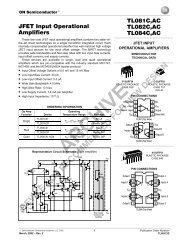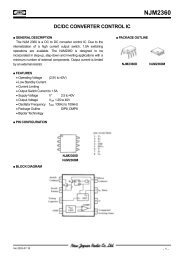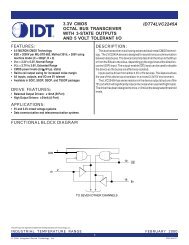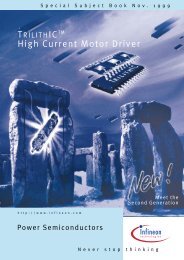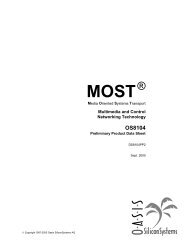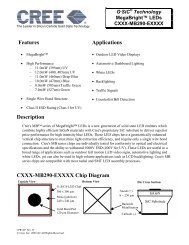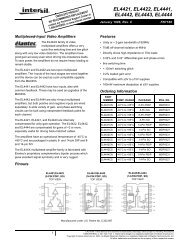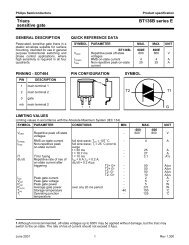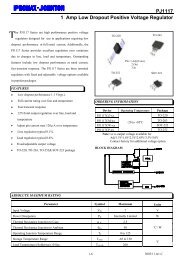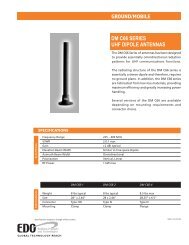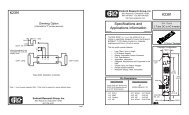AM/FM radio receiver circuit
AM/FM radio receiver circuit
AM/FM radio receiver circuit
Create successful ePaper yourself
Turn your PDF publications into a flip-book with our unique Google optimized e-Paper software.
Philips Semiconductors<br />
Product specification<br />
<strong>AM</strong>/<strong>FM</strong> <strong>radio</strong> <strong>receiver</strong> <strong>circuit</strong><br />
TEA5591A<br />
SOLDERING<br />
Introduction<br />
There is no soldering method that is ideal for all IC packages. Wave soldering is often preferred when through-hole and<br />
surface mounted components are mixed on one printed-<strong>circuit</strong> board. However, wave soldering is not always suitable for<br />
surface mounted ICs, or for printed-<strong>circuit</strong>s with high population densities. In these situations reflow soldering is often<br />
used.<br />
This text gives a very brief insight to a complex technology. A more in-depth account of soldering ICs can be found in our<br />
“IC Package Databook” (order code 9398 652 90011).<br />
Soldering by dipping or by wave<br />
The maximum permissible temperature of the solder is 260 °C; solder at this temperature must not be in contact with the<br />
joint for more than 5 seconds. The total contact time of successive solder waves must not exceed 5 seconds.<br />
The device may be mounted up to the seating plane, but the temperature of the plastic body must not exceed the<br />
specified maximum storage temperature (T stg max ). If the printed-<strong>circuit</strong> board has been pre-heated, forced cooling may<br />
be necessary immediately after soldering to keep the temperature within the permissible limit.<br />
Repairing soldered joints<br />
Apply a low voltage soldering iron (less than 24 V) to the lead(s) of the package, below the seating plane or not more<br />
than 2 mm above it. If the temperature of the soldering iron bit is less than 300 °C it may remain in contact for up to<br />
10 seconds. If the bit temperature is between 300 and 400 °C, contact may be up to 5 seconds.<br />
DEFINITIONS<br />
Data sheet status<br />
Objective specification This data sheet contains target or goal specifications for product development.<br />
Preliminary specification This data sheet contains preliminary data; supplementary data may be published later.<br />
Product specification This data sheet contains final product specifications.<br />
Limiting values<br />
Limiting values given are in accordance with the Absolute Maximum Rating System (IEC 134). Stress above one or<br />
more of the limiting values may cause permanent damage to the device. These are stress ratings only and operation<br />
of the device at these or at any other conditions above those given in the Characteristics sections of the specification<br />
is not implied. Exposure to limiting values for extended periods may affect device reliability.<br />
Application information<br />
Where application information is given, it is advisory and does not form part of the specification.<br />
LIFE SUPPORT APPLICATIONS<br />
These products are not designed for use in life support appliances, devices, or systems where malfunction of these<br />
products can reasonably be expected to result in personal injury. Philips customers using or selling these products for<br />
use in such applications do so at their own risk and agree to fully indemnify Philips for any damages resulting from such<br />
improper use or sale.<br />
February 1990 14



